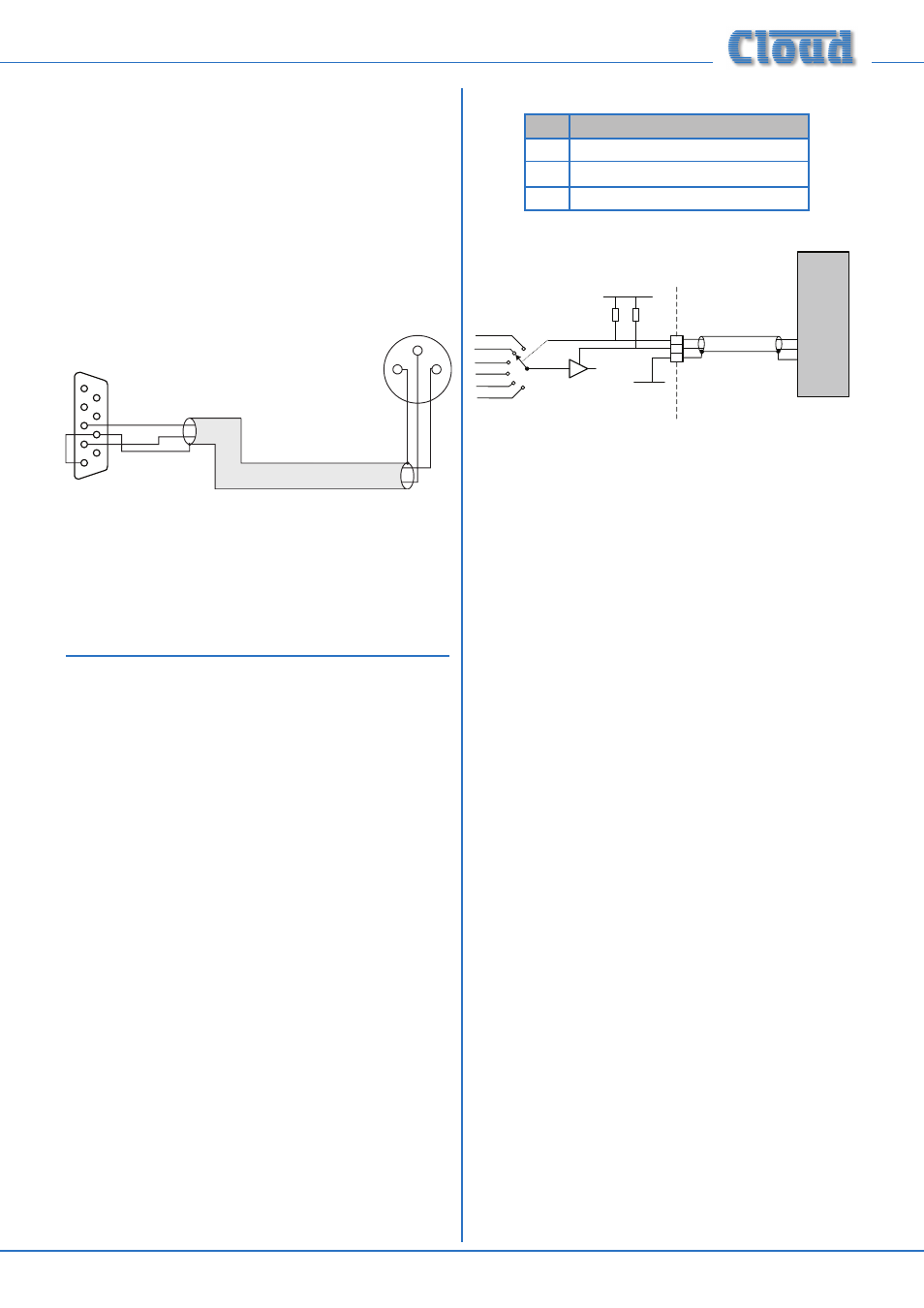Using the facility ports as auxiliary zone inputs, Rl-1 and rsl-6 remote control plates – general, Considerations – Cloud Electronics Z4ii User Manual
Page 19: Music level, Control of music source and level via external dc, Installation and user manual v1.0 19

Z4
II
& Z8
II
Installation and User Manual v1.0
19
Using the Facility Ports as auxiliary zone
inputs
The Facility Port provides a balanced audio input. If a port is
not connected to DM-1 or LM-1 remote input plates, it may
be used as a direct input to the zone from other equipment
forming part of the system (for example, a permanently
installed DJ mixer which only ever needs to feed its output
to that particular zone.)
Wire an external balanced source to the facility port as
shown below:
+
-
+
-
SC
N
1
2
3
SC
SCN
Balanced output:
pin 1 ground
pin 2 hot
pin 3 cold
1
9
8
7
6
5
4
3
2
Z8
II
/Z4
II
Facility Port
fig.24: Auxiliary zone input
An unbalanced source may also be connected; the use of
balancing transformers is recommended.
RL-1 and RSL-6 remote control
plates – general considerations
Cloud RL-1 and RSL-6 remote input plates are the same
physical size as a single-gang UK electrical socket and can be
mounted in a standard flush or surface-mounting box of
25 mm depth.
The plates should be connected to the Music Control port
of the relevant zone using single- or twin-core screened
cable as described at page 14
- Connecting an RL-1 remote
control plate and page 15 - Connecting an RSL-6 remote
control plate. The plate terminations are conventional screw
terminals and the Music Control port on the mixer is a 3-pin
5 mm-pitch screw terminal connector.
The remote control plates are passive and thus do not draw
any current from the mixer.
Control of music source and level via
external DC
It may be necessary in some installations to adjust the
music level and select music source in one or more zones
from an external control system (e.g., Crestron, AMX,
etc.). If the Music Control ports are not required for RL-1/
RSL-6 remote control plates, they may be used to input
DC voltages from the external system to effect these
adjustments.
Both music source selection and level can be controlled over
their full ranges with a DC voltage of 0 to +10 V. The pinout
of the Music Control port is as follows:
PIN
USE
1
0V ref.
2
Music level control ( 0 to +10 V)
3
Music source selection (0 to +10 V)
MUSIC
CONTROL PORT
1
2
3
+15 V
0 V
MUSIC VCA
MUSIC SOURCE
SELECT
4k7
15k
CONTROL
SYSTEM
0 V REF
LEVEL CONTROL
SOURCE CONTROL
fig.25: External DC control
NOTE: If the control voltage source is not isolated from
the power earth, there is a small risk of creating a ‘ground
loop’ by linking the mixer technical ground (0 V) to the
ground (0 V) of the equipment supplying the control voltages.
To minimise this risk, we suggest that all pieces of equipment
be in close proximity, and supplied from the same power
outlet.
Music level
Music level in a zone may be varied over its full range by
applying a DC voltage of between 0 and +10 V to pin 2,
the 0 V reference being connected to Pin 1. 0 V on pin 2
corresponds to maximum level and +10 V will produce 60
dB of attenuation. The rate of attenuation is approximately
165 mV/dB.
Note that there is an internal 4k7 “pull-up” resistor between
pin 2 and the internal +15 V rail. If pin 2 is left “floating”, this
pull-up will result in full attenuation. The output impedance
of the control voltage source should be low enough to
overcome the effect of this resistor.
